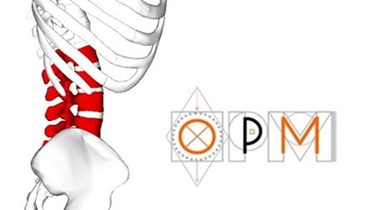FDA Clears First 3D-Printed, Load-Bearing Polymer Implant

Oxford Performance (OPM) announced that the FDA has issued a 510(k) clearance for its latest 3D-printed biomedical device, the SpineFab vertebral body replacement (VBR) system. This device is the first spinal implant to be cleared for a load-bearing indication, and it is suitable for long-term implantation.
The VBR device is intended to replace vertebral bodies in the thoracolumbar regions of the spine that have been damaged or are unstable due to tumors or trauma. In the press release, OPM announced that the device, 3D printed using OPM’s proprietary OXPEKK powder, has undergone rigorous testing and met all weight and fatigue requirements necessary for its intended long-term use.
“We have built a strategy with the patient in mind by working together with clinicians to bring innovative device solutions that anticipate improved surgical outcomes. Today we have achieved our goal to build the first 3D printed polymer implant that has been cleared for a load-bearing indication,” said Severine Zygmont, president of OPM Biomedical.
Zygmont went on to say that the first-of-its-kind device would lead the orthopedic industry to rethink how implants are designed and manufactured, saying, “We can now envision devices that will promote bone tissue formation while being imaging friendly and anatomically desirable.”
According to an interview 3D Printing Industry conducted with OPM CEO Scott DeFelice earlier this year, OPM has been working with its OXPEKK powder since 2000 because of the substance’s radiolucency, its bone-like mechanical properties, and its bone ongrowth characteristics.
DeFelice said that PEKK, as a raw material, already had a history of FDA regulatory acceptance, and OPM built on that history by incorporating it into a 3D-printing process that would allow clinicians to customize the implant for a patient-specific fit. By adding additional features such as drug elution or electric conductivity, OPM strives to make its devices more attractive to the consumer.
“Additive manufacturing allows you to do things that were previously impossible from a structural point of view,” said DeFelice. “The more jobs we can give [our structures], the more valuable they’ll be to our customers.”
Last year, Oxford Performance and Yale University announced a research partnership to collaborate on innovative 3D-printed biomedical solutions. The agreement specifies that the two organizations will develop a total of 10 projects, with future projects including rib replacements and devices that deliver antibiotics to ward off implant-related infections.
The SpineFab VBR’s regulatory approval is the latest of three recent clearances for OPM. In 2013, the FDA cleared a 3D-printed cranial prosthesis and, in 2014, a patient-specific facial implant. Both of the previously approved devices are distributed by Zimmer Biomet, and OPM is currently in discussions to find a distributor for the VBR system.
